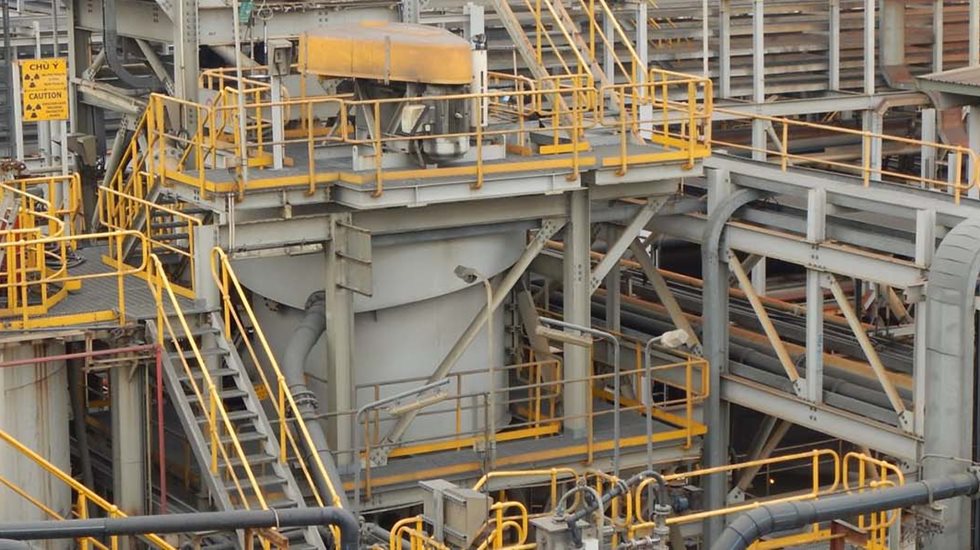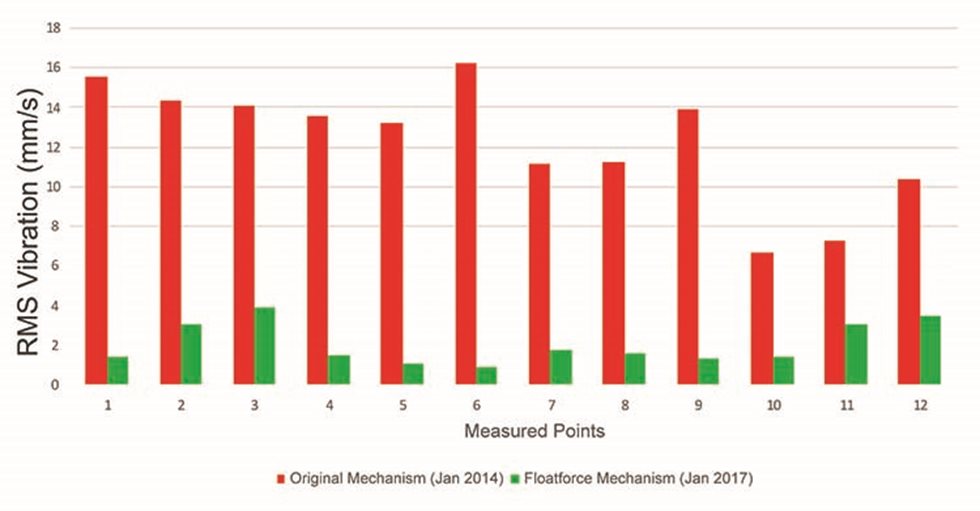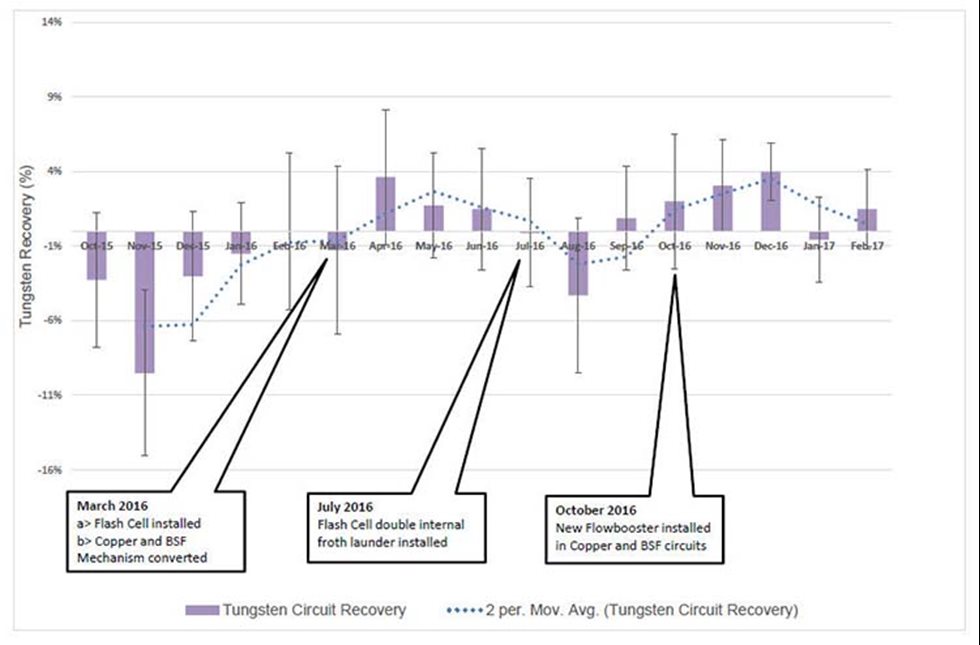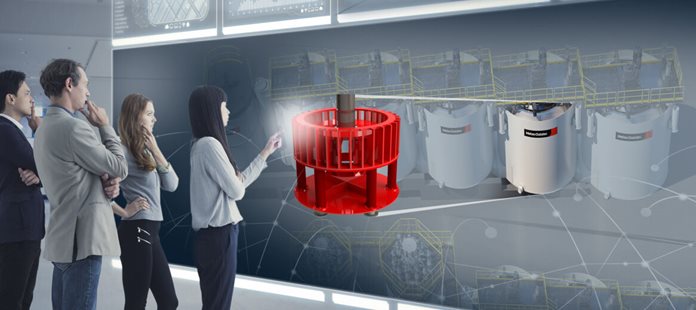Background
Masan Resources, one of the largest private-sector natural resources companies in Vietnam, acquired a controlling interest in Nui Phao in 2010, a world-class polymetallic project in Northern Vietnam. Masan Resources achieved commercial production in Q1 of 2014, with steady-state conditions of throughput and recovery levels achieved in Q4 of 2014.
Nui Phao is now the largest producer of tungsten outside China, and amongst the largest producers of acid-grade fluorspar and bismuth in the world. Masan Resources undertook various projects to improve operational profitability at Nui Phao, but the copper and bulk sulphide flotation (BSF) rougher circuits still experienced inefficiencies.
Since commissioning, Nui Phao’s metallurgical performance of the copper and BSF roughers was below expectations. In March 2013, the sulphur grade in the BSF tails was 3.5% S (on average), significantly higher than the design value of <1.5% S. The higher sulphur tails grades affect the downstream performance of the tungsten gravity plant. Coarse sulphur competes with tungsten in the gravity plant, and both tungsten grade and recovery suffer. The lower sulphur recoveries (particularly in the coarse +106 μm range) were attributed to insufficient flotation capacity and poor particle suspension (striation) in the flotation cells.
Nui Phao undertook various remedial steps and the BSF tails were reduced to 2.5% S. However, the copper and BSF circuit experienced significant structural and mechanical vibration and reduced mechanism wear life. Short-term solutions were implemented but it was recognised that a longer-term solution was required.
Scope
In 2015, NMPC approached Metso Outotec to investigate optimising recovery in the copper and BSF circuits, as well as reducing structural vibrations and improving mechanism wear life. Metso Outotec also investigated options to increase the sulphide minerals recovery from the BSF rougher tails stream. Mineralogy reports indicated that there were still significant coarse sulphide particles recoverable by flotation to warrant further investigation. The objective was to achieve a BSF tail grade (feed to tungsten gravity circuit) of ≤1.5% S.
FloatForce upgrade
After reviewing the existing copper and BSF circuit, Metso Outotec recommended replacing the internal components of the Metso cells with the FloatForce mechanism. In the Metso mechanism design, the stator is suspended from the lower shaft, and this arrangement was identified as the cause of the mechanical and structural vibration. The FloatForce stator design is bolted to the tank floor and was predicted to deliver a significant reduction in circuit vibration. It was expected that metallurgical performance would be unaffected by the mechanism change.
In October 2015, a FloatForce trial upgrade was undertaken on one Metso cell, resulting in significantly lower vibration, with no adverse metallurgical performance. In March 2016, during a 3-day shutdown, all remaining copper and BSF rougher cells were upgraded with FloatForce mechanisms (plus new bearing assemblies with drive shafts).
Structural improvement
The FloatForce mechanism significantly reduced the structural and mechanical vibration, see figure 1. Previously in the copper and BSF circuit, the 12 points surveyed indicated that the structural vibration ranged between 6 and 17 mm/s. Seven points were above the permissible level. After the conversion to FloatForce, all 12 points indicated a structural vibration <4mm/s and were within acceptable levels.



